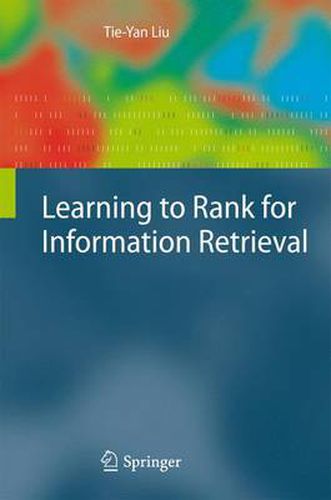Readings Newsletter
Become a Readings Member to make your shopping experience even easier.
Sign in or sign up for free!
You’re not far away from qualifying for FREE standard shipping within Australia
You’ve qualified for FREE standard shipping within Australia
The cart is loading…






This title is printed to order. This book may have been self-published. If so, we cannot guarantee the quality of the content. In the main most books will have gone through the editing process however some may not. We therefore suggest that you be aware of this before ordering this book. If in doubt check either the author or publisher’s details as we are unable to accept any returns unless they are faulty. Please contact us if you have any questions.
Due to the fast growth of the Web and the difficulties in finding desired information, efficient and effective information retrieval systems have become more important than ever, and the search engine has become an essential tool for many people.
The ranker, a central component in every search engine, is responsible for the matching between processed queries and indexed documents. Because of its central role, great attention has been paid to the research and development of ranking technologies. In addition, ranking is also pivotal for many other information retrieval applications, such as collaborative filtering, definition ranking, question answering, multimedia retrieval, text summarization, and online advertisement. Leveraging machine learning technologies in the ranking process has led to innovative and more effective ranking models, and eventually to a completely new research area called learning to rank .
Liu first gives a comprehensive review of the major approaches to learning to rank. For each approach he presents the basic framework, with example algorithms, and he discusses its advantages and disadvantages. He continues with some recent advances in learning to rank that cannot be simply categorized into the three major approaches - these include relational ranking, query-dependent ranking, transfer ranking, and semisupervised ranking. His presentation is completed by several examples that apply these technologies to solve real information retrieval problems, and by theoretical discussions on guarantees for ranking performance.
This book is written for researchers and graduate students in both information retrieval and machine learning. They will find here the only comprehensive description of the state of the art in a field that has driven the recent advances in search engine development.
$9.00 standard shipping within Australia
FREE standard shipping within Australia for orders over $100.00
Express & International shipping calculated at checkout
This title is printed to order. This book may have been self-published. If so, we cannot guarantee the quality of the content. In the main most books will have gone through the editing process however some may not. We therefore suggest that you be aware of this before ordering this book. If in doubt check either the author or publisher’s details as we are unable to accept any returns unless they are faulty. Please contact us if you have any questions.
Due to the fast growth of the Web and the difficulties in finding desired information, efficient and effective information retrieval systems have become more important than ever, and the search engine has become an essential tool for many people.
The ranker, a central component in every search engine, is responsible for the matching between processed queries and indexed documents. Because of its central role, great attention has been paid to the research and development of ranking technologies. In addition, ranking is also pivotal for many other information retrieval applications, such as collaborative filtering, definition ranking, question answering, multimedia retrieval, text summarization, and online advertisement. Leveraging machine learning technologies in the ranking process has led to innovative and more effective ranking models, and eventually to a completely new research area called learning to rank .
Liu first gives a comprehensive review of the major approaches to learning to rank. For each approach he presents the basic framework, with example algorithms, and he discusses its advantages and disadvantages. He continues with some recent advances in learning to rank that cannot be simply categorized into the three major approaches - these include relational ranking, query-dependent ranking, transfer ranking, and semisupervised ranking. His presentation is completed by several examples that apply these technologies to solve real information retrieval problems, and by theoretical discussions on guarantees for ranking performance.
This book is written for researchers and graduate students in both information retrieval and machine learning. They will find here the only comprehensive description of the state of the art in a field that has driven the recent advances in search engine development.